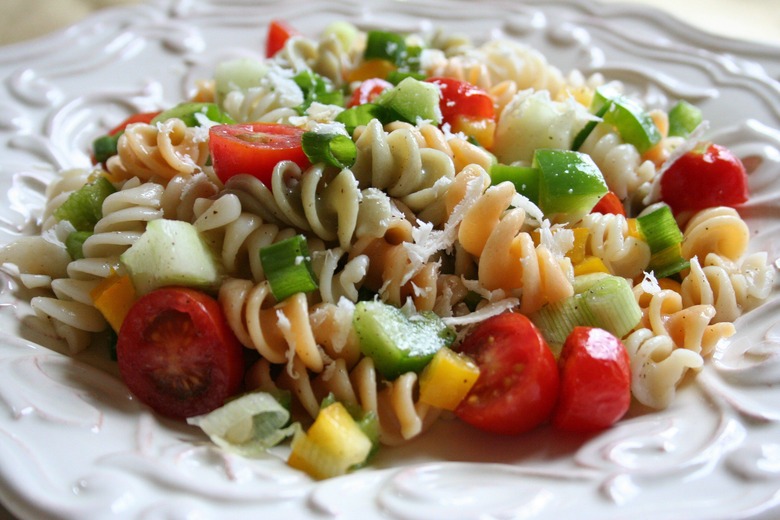Here's Why Italy's Obesity Rate Is Lower Than America's
Italian meals are commonly associated with gluttony: Large, heaping bowls of spaghetti and meatballs, giant pizzas topped with everything but the kitchen sink, and trays full of gargantuan lasagna portions. But, miraculously, even after all of that pasta, Italians are healthier than Americans.
Approximately 21 percent of Italians are obese, according to the World Health Organization. That may sound alarming, but it's peanuts compared with the United States' staggering 33 percent. Italy even beats out the United Kingdom (26.9 percent) and France (23.8 percent).
Why is Italy's obesity rate one of the lowest in Western Europe? The answer lies in the culture surrounding the popular Mediterranean diet. We spoke with Valentina Cecconi, head nutritionist for Buitoni Pasta, in the Italian food company's very own pasta kitchen nestled in the heart of Tuscany at the Casa Buitoni.
Italians eat very differently from health-conscious Americans. Whereas much of the Western world swears by high-protein and low-carb diets like paleo and Raw30, Italians eat pasta every day and get much of their energy from complex carbs and heavy starches like bread and pasta. In a healthy diet, Cecconi suggests, just more than half of your daily calories would come from carbs like pasta and bread. Unsaturated fats like olive oil and fish should take up 30 percent. The rest of your diet should come from meats and cheeses, a fairly small percentage.
"Glucose is the main source of energy for our muscles, tissues and brain," Cecconi said. "High-protein diets have low carb intake, which means that the level of glucose in the blood stream is low. When you're on a diet you want to burn fat. If you are on a high-protein, low-carb diet, you'll end up losing weight, but after a few weeks you need to go back to regular Mediterranean diet to balance out your system."
But there is more to the Mediterranean diet than just eating pasta every day: It's all about portion control. The recommended serving of pasta according to Buitoni is 80 grams (2.8 ounces) of durum wheat pasta, or 115 to 120 grams (4 to 4.2 ounces) of egg-based pasta. That's a far cry from the heaping portions of never-ending pasta you can get at most Italian restaurants. Italians also cook pasta with plenty of vegetables and beans, from the classic tomato sauce and eggplant ragu to pasta stuffed with mushrooms or topped with seasonal vegetables like zucchini and squash.
Besides portion control, Italian culture plays a huge role in the success of the Mediterranean diet. Rarely do Italians eat on the go; meals are sit-down affairs that are — whether formal or informal — a social occasion. Food is often shared family-style, and sad desk lunches are unheard of.
"The communality of the meal is a crucial part of a balanced diet it helps us enjoy food in a more frugal way," Cecconi said. "We sit down and eat together. Even if I have no one to eat with, I set the table and make a moment for myself. Food is never rushed."
